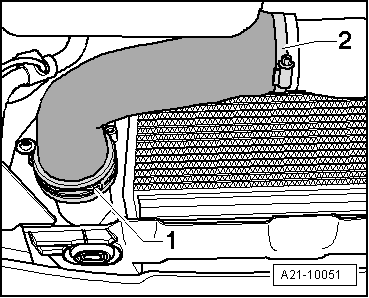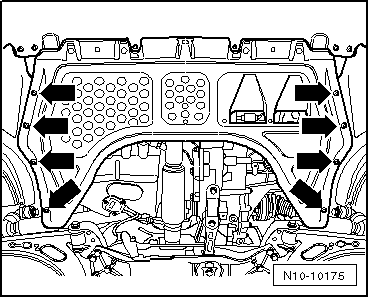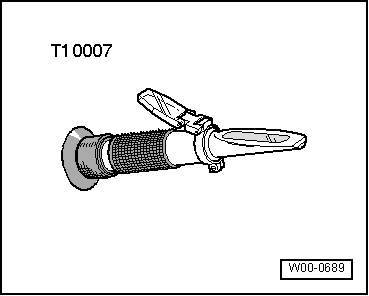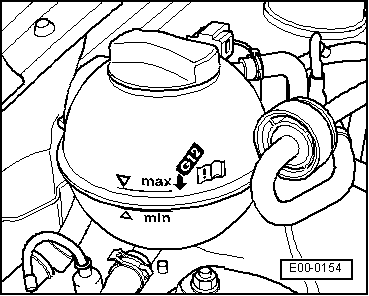| –
| Release the clamp -1- from the lower radiator hose using the pliers -T20174-. |

Note | Observe disposal regulations! |

Note | t
| Only use G 12 anti-freeze additive in line with Standard TL -VW 774 F-. Identification: colour lilac |
| t
| The lilac G 12 (as per Standard TL -VW 774 F-) can be mixed with the red G 12 additive previous used. |
| t
| G 12 is never to be mixed with other antifreeze additives. |
| t
| If the fluid in expansion tank is brown, G 12 has been mixed with other anti-freeze additives. In this case the coolant must be changed. |
| t
| G 12 and anti-freeze additives marked "In accordance with -VW 774 F-" prevent frost and corrosion damage, scaling and also raise boiling point of coolant. For this reason, the cooling system must always have the prescribed mixture of antifreeze and anti-rust. |
| t
| Especially in countries with tropical climates, antifreeze helps to guarantee reliability of running when the engine is submitted to high stress, thanks to the higher boiling point that it provides. |
| t
| Antifreeze protection must be guaranteed to approx. -25 ºC (in countries with arctic climates, to approx. -35 ?). |
| t
| The coolant concentration must not be reduced by adding water in hot seasons or in countries with hot climates. The percentage of antifreeze additive must be at least 40%. |
| t
| If, for reasons of climate, greater antifreeze protection is needed, the G 12 percentage can be increased, but only up to 60% (antifreeze protection to -40 ºC). If the ratio is greater, the cooling and antifreeze protection capacity is reduced. |
| t
| Never re-use the coolant if the following have been replaced: the radiator, the heat exchanger, the cylinder head or the cylinder head gasket. |
|
|

|







 WARNING
WARNING Note
Note